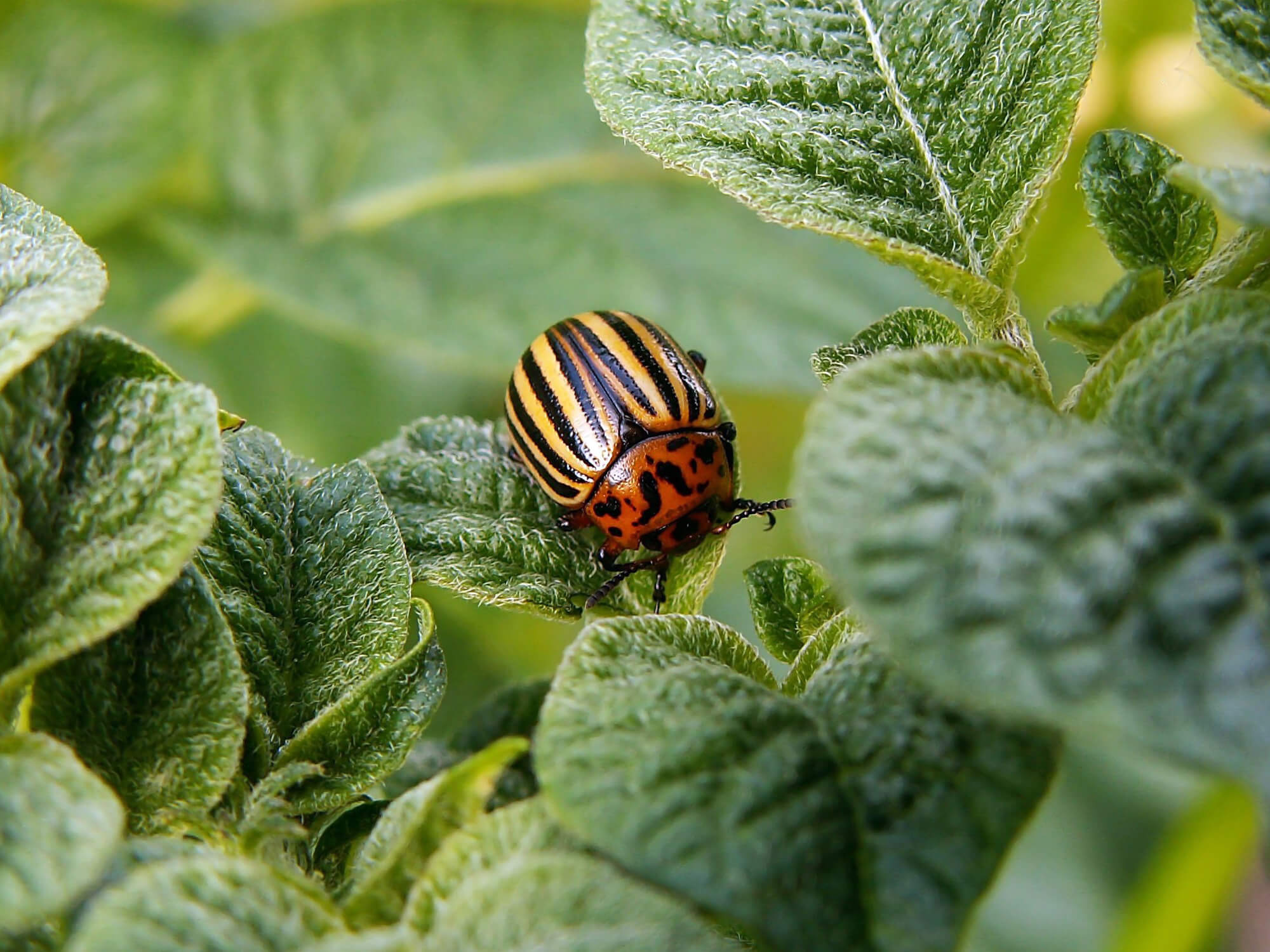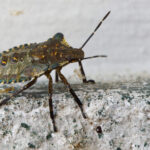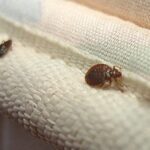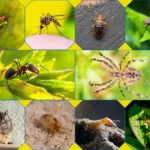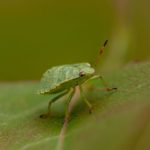Orange is the new black! Here we are talking about beetles and not the television series. Even though we have always considered beetles to be black, they can come in a variety of colors. In this article, we will discuss the orange and black beetles that may invade or are already in your garden or home.
Have you ever seen an orange and black beetle? If the answer is yes, that’s fantastic, but if the answer is no, that’s also fantastic since many people are dealing with the problem of uninvited orange and black beetles in their homes. Once Halloween is over, we start getting ready for Christmas. However, if you still notice orange and black spots in your house or garden, then my friend you have some unwanted visitors. But don’t worry; in this article, we’ll help you identify them and learn how to get rid of them.
There are many different species of beetles on our planet, some of which are orange-black in color. A few different varieties of beetles that fit this color scheme are also considered to be dangerous. Even while some of these orange and black beetles might spread diseases, others of them are not toxic.
Table of contents
Types of Orange-Black Beetles
- Asian Lady Beetles
- Banded Net-winged Beetle (Calopteron discrepancy)
- Burying Beetle (Nicrophorus spp.)
- Eastern Boxelder Beetle
Asian Lady Beetles
Lady beetles have earned a reputation as helpful insects throughout history. They are known to be beneficial insects that eat aphids and other pests that harm plants, therefore gardeners welcome them with open arms, even though these lady beetles assist in pest removal, the Asian Multicolored Lady Beetle is the complete opposite since it has turned into a pest itself.
These multicolored Asian lady beetles (Harmonia axyridis (Pallas)) come in a variety of colors including orange, yellow, red, and (occasionally) even black. The United States and Canada are now threatened by these orange and black beetles. They are bothersome and harmful to both people as well as other crops. These beetles don’t have many rivals, however, occasionally certain flies and wasps have been spotted attacking them. Despite having a higher mortality rate in regions with sub-freezing temperatures, they have managed to adapt and survive by seeking shelter in homes and buildings.
The lifespan of Asian lady beetles
Multicolored Asian lady beetles can live up to three years, adults normally survive between 30 and 90 days.
Do Asian Lady Beetles Cause Damage
Asian ladybeetles are a bothersome insect. They don’t feed or reproduce inside any house, and if they come inside your house then they won’t harm materials, furniture, or constructions. However these beetles do leave a slimy yellow mark and a strong, bitter-smelling stench on whatever surface or substance they come in contact with which is indeed bothersome.
These orange and black beetles like to take shelter among clusters of wine grapes in vineyards throughout the fall. The flavor of the wine might be affected if any of these unintentionally process with the grapes, gross isn’t it?
Other than that these lady beetles like to live around windows and, doors, light fixtures, as well as on walls and ceilings in the spring. On mild winter days, these Asian ladybeetles start infecting indoors. They start their infestation with huge swarms and gather outside of buildings, houses, gardens, and inside cracks and crevices of the siding and trim.
Are Asian lady bugs harmful to humans?
Orange and black colored lady beetles are not harmful to humans. Although they do have the habit of biting. Their bite is equal to that of a pinprick. These Asian lady beetles neither transport nor spread any illness but they may cause allergic reactions such as
- Conjunctivitis (pink eye),
- Coughing,
- Hay fever,
- Hives,
- Asthma
So to be on the safer side, if you come into touch with an Asian lady beetle, it’s crucial to wash your hands afterward.
How to get rid of Asian lady beetles
- Use a high-quality silicone or silicone-latex caulk to fill up any minor exterior cracks, fissures, gaps, and holes.
- Repair or install windows, vents, roofs, chimneys, and doors.
- Use a vacuum, broom, and sticky tape to keep ladybeetles away
- Use citronella or citrus oil as a repellent for ladybeetles’ strong smell.
Banded Net-winged Beetle
The Banded Net-winged Beetle (Calopteron discrepens) is another example of an orange and black beetle. They are commonly found in moist and wet woods feeding on vegetation. These beetles are active throughout the day till dusk. They like to rest on flowers or leaves. This branded net-winged beetle scares their predators by fanning its net wings.
They prefer the wooded areas and the banks of the River as adults. These beetles are often seen visiting blooming plants. They are active for at least until September.
These beetles release poisons known as pyrazines from their wings when it is broken. This poison is a foul-smelling compound that gives the predator feeding on that bug a rather terrible taste. This poison is only released when the wing is broken. This tactic is referred to as aposematic coloring. It prolongs the beetle’s life so that it can consume plant liquids and slime till its death.
These beetles also release poisons from the spaces between their leg joints when they feel threatened. This bitter liquid might further scare off predators.
The lifespan of Banded Net-winged Beetles
They may live up to 1 year or more. As a larva, they live as a colony on dead tree bark and as an adult, they feed and live in moist woods.
Do Banded Net-winged Beetles Cause Damage
No, branded net-winged beetles are neither harmful nor poisonous to plants or humans. As a larva, they feed on small insects under the tree bark, and when they become adults they feed on the juice and slime of the plant.
However, these beetles are not harmful to humans or plants so there’s nothing to be worried about if you encounter any of these orange and black beetles in your garden.
Burying Beetle (Saxton Beetle)
The Burying Beetle (Nicrophorus spp.) is also a type of orange and black beetle. They have black bodies with vivid patterns in orange or red on their hard wings (elytra). Their antennae help them in finding the direction of food.
As per the name, these beetles bury and feed on the dead animal’s corpses. Both male and female burying beetles work together. When they find any small dead animal like a mouse or bird they both dig a hole and bury that animal. These beetles generate some antibacterial or antifungal on the body that keeps it fresh.
They are common across the Northern Hemisphere. They may be discovered on recently dead animals, although they prefer to stay in their burrows.
Are burying beetles dangerous?
No, these orange and black beetles are endangered and harmless to humans and plants. They only feed on dead animals. If you find any in your garden then they must be after some dead animals’ corpses.
Burying beetle, however, is considered one of nature’s most effective recyclers. They redistribute nutrients to the soil to support the plant and control ant and fly populations.
How to get rid of burying beetles
- Use dish soap and water.
- Use vacuums, brooms, or sticky traps.
- Suspend bug traps.
- Apply insecticidal soap to your land and plant soil.
- Use pesticides.
Eastern Boxelder Beetle
Eastern Boxelder bugs are another orange and black beetle. They are recognized for living in mixed woods and occasionally outside of them in fields during the summers. They are frequently seen around boxelder trees, maple trees, and ash trees. These beetles like warm areas and take shelter in buildings when the temperature is starting to get colder.
These beetles are most active during the summertime and they can be controlled during winter when they are less active. During hot summers when boxelder bugs are highly active, they feed on fruits such as peaches, plums, and cherries. They also feed on leaves, flowers, and seeds which damage the plant and trees.
The Lifespan of Boxelder Bugs
Boxelder bugs have a lifespan of 1 year. They emerge from hibernation in late April to early May, the time when the temperature warms up and the boxelder tree buds open. These bugs fly to their host trees for protection, food, and reproduction.
Do Boxelder Bugs Cause Damage
In the wild, boxelder bugs have been shown to harm their host plants to various degrees. The leaves may change because adult and larvae boxelder bugs drain plant fluid from emerging leaves. Additionally, host tree blossoms, delicate branches, and seeds might be harmed.
These orange and black beetles are also bothersome insects to people and their homes. These boxelder bugs may enter residential areas in cases of severe infestations. When crushed, they produce a foul stench and reddish-orange stain that can stain clothing and furniture. Their waste is also offensive and leaves a stain wherever they go. The worst fact about these boxelder bugs is that if they die inside the wall voids of a house or any building, they could draw carpet beetles.
Are boxelder bugs harmful to humans?
Boxelder bugs are not harmful to humans or pets. They also do not cause any illness or health issues. In some cases, they do bite in self-defense but their bite is not toxic and it only creates a small red patch like a mosquito bite.
How to Get Rid Of Boxelder Bugs
The greatest method for getting rid of boxelder bugs is prevention, both in the fall and especially in the spring. This prevention can be done by making your home pest-proof, for example;
- Repair the broken window leaving no patch or crack.
- Repair roof and soffit vent screens.
- Install door sweeps.
- Seal external cracks, gaps, and holes around windows, doors, and sidings with silicone or silicone-latex caulk.
- Use pesticides.
Read More: How To Get Rid Of Silverfish
Final Thoughts
Beetles are seeking shelter anywhere they can as the days become shorter and colder. Many beetles can’t stand the cold, so they invade people’s properties to stay warm. Just like other bugs, orange and black beetle insects also infest human property. These orange and black beetles can be detrimental to plants in some cases, but not in others. In contrast, this article goes into great depth on a few bugs that you could find in your house or yard.

